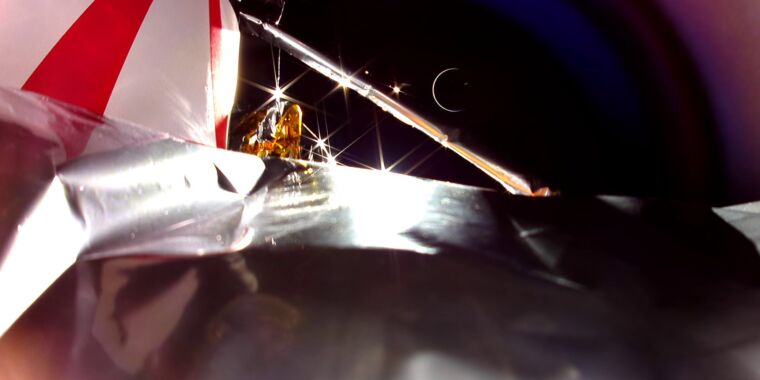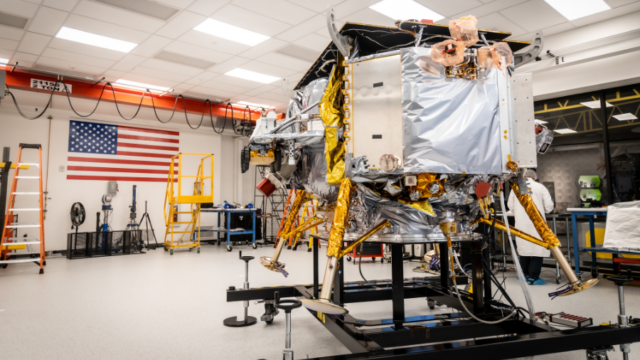NASA urged Astrobotic not to send its hamstrung spacecraft toward the Moon


Astrobotic knew its first space mission would be rife with risks. After all, the company’s Peregrine spacecraft would attempt something never done before—landing a commercial spacecraft on the surface of the Moon.
The most hazardous part of the mission, actually landing on the Moon, would happen more than a month after Peregrine’s launch. But the robotic spacecraft never made it that far. During Peregrine’s startup sequence after separation from its United Launch Alliance Vulcan rocket, one of the spacecraft’s propellant tanks ruptured, spewing precious nitrogen tetroxide into space. The incident left Peregrine unable to land on the Moon, and it threatened to kill the spacecraft within hours of liftoff.
“What a wild adventure we were just on, not the outcome we were hoping for,” said John Thornton, CEO of Astrobotic.
Astrobotic’s control team, working out of the company’s headquarters in Pittsburgh, swung into action to save the spacecraft. The propellant leak abated, and engineers wrestled control of the spacecraft to point its solar arrays toward the Sun, allowing its battery to recharge. Over time, Peregrine’s situation stabilized, although it didn’t have enough propellant remaining to attempt a descent to the lunar surface.
Peregrine continued on a trajectory out to 250,000 miles (400,000 kilometers) from Earth, about the same distance as the Moon’s orbit. Astrobotic’s original flight plan would have taken Peregrine on one long elliptical loop around Earth, then the spacecraft would have reached the Moon during its second orbit.
On its way back toward Earth, Peregrine was on a flight path that would bring it back into the atmosphere, where it would burn up on reentry. That meant Astrobotic had a decision to make. With Peregrine stabilized, should they attempt an engine burn to divert the spacecraft away from Earth onto a trajectory that could bring it to the vicinity of the Moon? Or should Astrobotic keep Peregrine in line to reenter Earth’s atmosphere and avoid the risk of sending a crippled spacecraft out to the Moon?
Making lemonade out of lemons
This was the first time Astrobotic had flown a space mission, and its control team had much to learn. The malfunction that caused the propellant leak appears to have been with a valve that did not properly reseat during the propulsion system’s initialization sequence. This valve activated to pressurize the fuel and oxidizer tanks with helium.
When the valve didn’t reseat, it sent a “rush of helium” into the oxidizer system, Thornton said. “I describe it as a rush because it was very, very fast. “Within a little over a minute, the pressure had risen to the point in the oxidizer side that it was well beyond the proof limit of the propulsion tank. We believe at that point the tank ruptured and led to, unfortunately, a catastrophic loss of propellant … for the primary mission.”
Thornton described the glum mood of Astrobotic’s team after the propellant leak.
“We were coming from the highest high of a perfect launch and came down to the lowest low, when we found out that the spacecraft no longer had the helium and no longer had the propulsion needed to attempt the Moon landing,” he said. “What happened next, I think, was pretty remarkable and inspiring.”
In a press briefing Friday, Thornton outlined the obstacles Astrobotic’s controllers overcame to keep Peregrine alive. Without a healthy propulsion system, the spacecraft’s solar panels were not pointed at the Sun. With a few minutes to spare, one of Astrobotic’s engineers, John Shaffer, devised a solution to reorient the spacecraft to start recharging its battery.
As Peregrine’s oxidizer tank lost pressure, the leak rate slowed. At first, it looked like the spacecraft might have only hours of propellant remaining. Then, Astrobotic reported on January 15 that the leak had “practically stopped.” Mission controllers powered up the science payloads aboard the Peregrine lander, proving the instruments worked and demonstrating the spacecraft could have returned data from the lunar surface if it landed.
The small propulsive impulse from the leaking oxidizer drove Peregrine slightly off course, putting it on a course to bring it back into Earth’s atmosphere. This set up Astrobotic for a “very difficult decision,” Thornton said.

Nudging Peregrine off its collision course with Earth would have required the spacecraft to fire its main engines, and even if that worked, the lander would have needed to perform more maneuvers to get close to the Moon. A landing was still out of the question, but Thornton said there was a small chance Astrobotic could have guided Peregrine toward a flyby or impact with the Moon.
“The thing we were weighing was, ‘Should we send this back to Earth, or should we take the risk to operate it in cislunar space and see if we can send this out farther?'” Thornton said.
Source link




